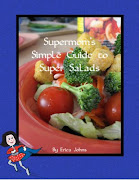Back in the day when I was young and newly married, my husband's sweet parents would make homemade applesauce that they canned and then brought to us when they came to visit. They had purchased local apples, and then one by one they had peeled, sliced, and cored every. single. one. and THEN cooked them on the stove top in a large pot with a little water in the bottom, taking special care to make sure it didn't scorch on the bottom.
So that is how I learned to do it, too.
And when I think about how many millions of lightyears easier it is for me to make applesauce now, I practically weep inside for that young, eager mother of little ones who spent many back-breaking hours peeling and coring.
If you are doing all that work to make applesauce, first: YOU ROCK! Second, STOP and READ THIS INSTEAD! Your misery is almost over.
Thankfully, before too many years of hand-cramping applesauce-making misery went by, I learned about good tools for home food preservation. The two that are essential to my applesauce making are these:
 |
| The Back to Basics Food Strainer makes peeling a coring a thing of the past! |
 |
| This fabulous steamer means that I only have to wash my apples to prepare them for sauce and juice-making! |
First, let me tell you about my steamer:
 |
| The next pan that nests inside of the bottom one allows the steam to rise up through the center cone. This pan also collects beautiful juice! |
 |
| Put the top on and let it roll! I leave the burner on high so the water in the bottom boils continuously. |
 |
| After about 25 minutes or so the apples are super smooshy and easy to run through the food strainer. |
The Victorio Strainer in the above video is basically the same idea as the one I have, except mine is a little less expensive. Nevertheless, the idea is that you put your fruit in the top funnel, turn the crank (easy and fun for kids to do), and out one side comes perfect applesauce, and out the other side comes peels and cores. This works great for tomatoes, too!
For each full colander of apples that we steamed we got a little more than a full 9x13 pan of applesauce. Since the apples we're working with right now are June apples, they are pretty sour, so the sauce needed to be sweetened. This year I experimented with using Sweet Leaf Stevia, Coconut Sugar, and finally some nice local honey. The honey ended up being our favorite, by far. It was also less expensive than the Coconut Sugar. I don't have a specific recipe to recommend to you for sweetening your applesauce. It's really going to depend on your apples and how sweet you want your applesauce to be. So just experiment little by little until you get a feel for how much honey (or other sweetener) you need to add to get it just right.
To store your applesauce, you can choose to can it or freeze it. I avoid using all plastic containers that have BPA in them. #3, 6, and 7 are the worst. Also, Tupperware has BPA in it so I avoid using that if possible. You can freeze in glass jars if you leave an inch or more of head space. There are some square and rectangular glass containers that can work well for this as well. You can do some research about which plastic containers should be safe. (I'm not going to bother linking to any because plastic safety seems to change all the time, so in an year from now who knows if the information I find today is still relevant.)
With the help of my food strainer and the steamer I was able to process a large laundry basket full of organic apples from our bad yard in less than 4 hours, including cleanup time. That is time well-spent!
Have you ever made applesauce? What tips would you want to share with us?














1 comment:
Sounds great! I like to sweeten our applesauce with frozen apple juice concentrate. Now I'm not diehard organic, etc. so I just use the store brand (100% apple juice). It tastes great!
Last I made applesauce I just employed my girls to help peel & core the apples, cooked 'em & blended them in the blender. Was thinking of borrowing my in-laws food mill (I think it's called) this year to bypass the peeling/coring step.
~Julie :)
Post a Comment